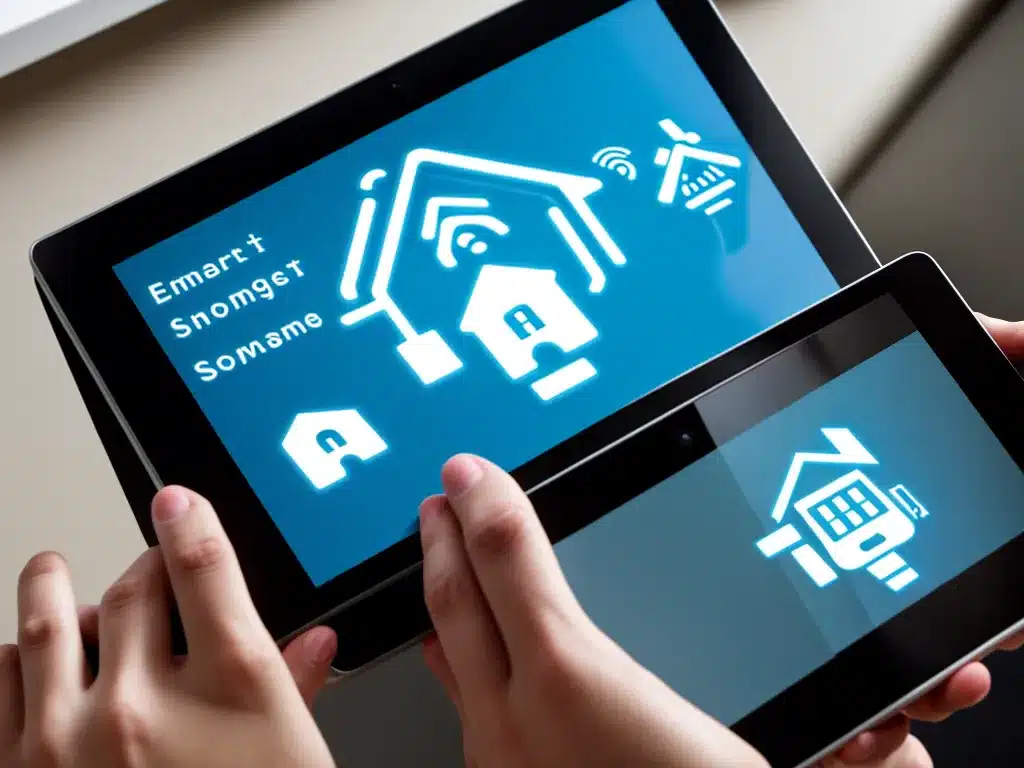
Introduction
The smart home market has exploded in recent years, with the proliferation of connected devices like smart speakers, thermostats, lights, and more. This surge in smart devices has highlighted the need for smart home operating systems that can connect and manage all these devices together into one integrated system. In this article, I will provide an in-depth look at the emergence and evolution of smart home operating systems.
What is a Smart Home Operating System?
A smart home operating system is the software layer that controls, connects, and allows interoperability between the various smart devices and appliances in a home. It provides a centralized platform to manage and monitor connected devices from a single interface.
Some key capabilities and functions of smart home operating systems include:
-
Device connectivity and management – Discover, connect, and configure various devices like lights, thermostats, locks, outlets, security cameras etc.
-
Automation – Create rules, schedules, and triggers to automate actions and behaviors of connected devices. For example, turning on lights at sunset.
-
Remote monitoring and control – Monitor and control connected devices remotely from smartphones, tablets, smartwatches, or voice assistants.
-
Data collection and insights – Collect usage data from devices to provide insights like energy monitoring.
-
Multi-user support – Manage access and permissions for multiple users.
-
Integration with 3rd party services – Integrate with other smart home platforms and voice assistants like Alexa, Google Assistant etc.
-
Privacy and security – Data encryption, access controls, activity logs to protect user privacy.
Early Stage – Manufacturer-specific Systems
In the early days of smart home technology, the landscape was fragmented with separate devices and protocols from individual manufacturers. Each brand like Philips Hue, Nest, Ecobee etc. had their own standalone apps to control their respective products.
There was no overarching operating system to bring harmony between devices. This often led to walled gardens, with limited ability to connect devices from different brands. Users often had to jump between multiple apps to control their smart home.
These early manufacturer-specific systems laid the foundation for smart home technology. But the lack of interoperability ultimately restricted widespread adoption. It highlighted the need for a unified smart home OS.
The Rise of Voice Assistants
The emergence of AI-powered voice assistants like Amazon Alexa and Google Assistant in the mid-2010s brought new capabilities to smart homes. Users could now control devices via voice commands.
Alexa and Google Assistant partnered with multiple device makers, effectively functioning as an operating system tying together various smart products. However, these voice assistants had some limitations:
- Primarily focused on voice control, lacking visual management interfaces.
- Locked into Amazon/Google’s ecosystem, with limited cross-compatibility.
The voice assistant boom highlighted the appeal of centralized, voice-controlled smart home management. This further propelled the need for full-fledged smart home operating systems.
The Evolution of Dedicated Smart Home Platforms
In response to the growing smart home market, major technology companies began launching dedicated smart home system software:
-
Apple HomeKit – Launched in 2014, HomeKit provides a common protocol and API for Apple devices to communicate with compatible smart home accessories.
-
Samsung SmartThings – Acquired by Samsung in 2014, SmartThings offers a stand-alone smart home platform to connect and control devices using a hub.
-
Amazon Alexa Smart Home – Allows users to discover and set up smart devices through Alexa. Alexa serves as the main interface for voice control.
-
Google Home – Google’s smart home app connects Nest and other compatible devices. Focuses heavily on Google Assistant for voice control.
These platforms aimed to offer complete, centralized control for a smart home. However, challenges around compatibility and ecosystem lock-in remained. None emerged as an industry-wide standard.
Open Source Approaches
To address ecosystem fragmentation, some open source smart home platforms emerged:
-
Home Assistant – A popular open source project founded in 2013, Home Assistant provides a vendor-neutral OS to integrate devices from any manufacturer.
-
OpenHAB – An open source automation software project with a large community of developers and integrations with thousands of different devices and systems.
-
Mozilla WebThings – A framework using web technologies to enable IoT devices to communicate regardless of manufacturer. Still in early stages.
These open platforms underscore the demand for systems that promote seamless interoperability between devices and brands. However, the trade-off is often complexity – open platforms rely on users to integrate devices and create automations.
The Matter Standard
In response to continued ecosystem fragmentation, a new industry-wide standard for smart home interoperability is emerging – Matter.
Created by the Connectivity Standards Alliance, Matter aims to function as a universal IP-based networking protocol that enables communication between smart home devices across brands. This shared language intends to break down walled gardens and guarantee compatibility.
Major companies like Amazon, Apple, Google, Samsung are all supporting Matter. This united front could be the tipping point that finally enables the seamless smart home experience consumers have been waiting for.
Key Takeaways
-
Early smart home tech was fragmented, with manufacturer-specific systems and limited interoperability between brands.
-
The emergence of voice assistants previewed the appeal of centralized smart home control.
-
Dedicated platforms from big tech companies aimed to deliver complete smart home operating systems but often still had ecosystem and compatibility issues.
-
Open source systems like Home Assistant gave more vendor-neutral options but required complex configurations.
-
The new Matter standard marks a potential breakthrough for unified multi-device communication in the smart home.
The smart home market continues to rapidly evolve. While past systems made progress, challenges around fragmentation and walled gardens persist. But with Matter on the horizon, the dream of truly integrated smart home operations may soon become reality.












